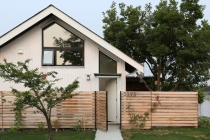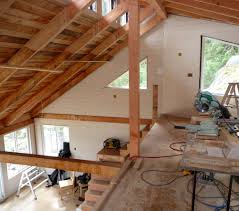What does it mean to get older? Don’t shake your head at me, I’m serious. What will it mean to me, physically, to get older? Not just greyer and wrinklier, but weaker and more frail.
I recently had the pleasure of spending some weeks with a relative as she started her recovery from hip replacement surgery. Overnight a healthy, athletic lady became disabled, albeit temporarily. She needed a walker to get around even short distances. She had trouble getting up and down stairs. And she wasn’t allowed to bend over from the waist, meaning she needed devices to grab items, a long-handled shoe horn, etc. She’d prepared for the recovery by having a sturdy metal bar installed in her bath/shower and used a bench when she showered.
She’s well on way to regaining her bouncy life. But staying with her really brought home how prepared we have to be for getting older without having to move. Because moving is out of the question. So I looked it up on the AARP website to see if they had any good ideas. And they did!
Of course, it’s more than making a cozy home, it’s safety, too.
Aging in place isn’t just about comfort. In very basic terms, it’s about avoiding falls. If an older person can avoid falling and breaking a hip, he can prevent a cascade of other health problems.
We have stairs, not ideal in a home where we’ll be getting older. But our bathroom and bedroom are on the same floor so we don’t have to try to go up and down a flight of stairs in the middle of the night. And our shower is big enough to get a bench in. The sink and shower faucets are easy to operate, and we set the temperature on one fixture without having to fiddle with knobs. Living small means our sink counter is close enough to the toilet to supply a hand-hold if we need assistance standing up. Also in our shower,
a tiled shower area with recessed shelves at arm’s level to stop you from having to stoop down to the floor or reach up to a shower rack
The kitchen/living room area on the top floor has enough places to hold onto to make it easy to get around if balance is a problem. And we can sit at our counter and work, so won’t have to stand for long periods if we are trying to avoid that. The dishwasher is in a counter-level drawer for easy loading and unloading, we have deep drawers instead of under-counter cabinets, so no stooping and reaching into the depths.
All our flooring is laminated hardwood, no carpets to trip on. We do have an area rug, a cowhide in front of the TV with no pile. But if we ever had problems with tripping, out it would go, decor be damned.
Elsewhere, we have lever-style door handles, again, no knobs to turn.
Some other ideas for making your home senior-friendly can be found at this Reader’s Digest article. This includes
• No-step entry: You should have at least one step-free entrance (either at the front, back, or side of the house) so everyone, including wheelchair users, can enter the home easily and safely.
OK, we have a very small sill, easy to step over but definitely a problem if we are in a wheelchair. But then, if DH or I end up in a wheelchair we are kind of screwed. The doorways are not wide enough to accommodate one, the hallways are too narrow. But short of that, our place is pretty well set up for aging in place.
If you’re thinking of making some changes in your home, though, read this article on things to consider about putting in expensive renos like stair glides, elevators, or even walk-in tubs. At first glance they look like a great idea, but they might not be suitable for you.
Of course, another reason we’re set to get older in our laneway is the proximity of our family. If (or when) the time comes that we aren’t able to get around town by walking and transit, they’ll be close enough to take us for an occasional shopping trip or medical appointment. But we are also really lucky that transit is so close to our home, and shopping is a pleasant walk down and up the hill.


















